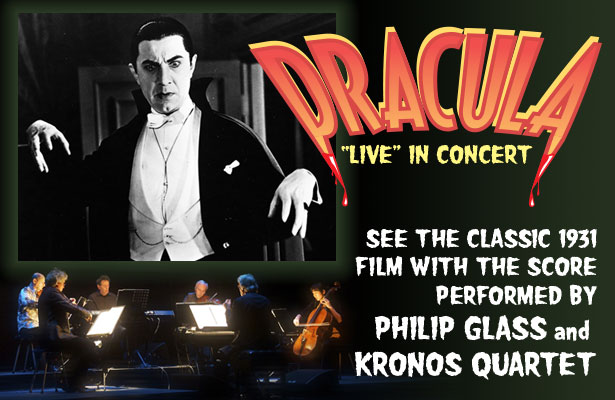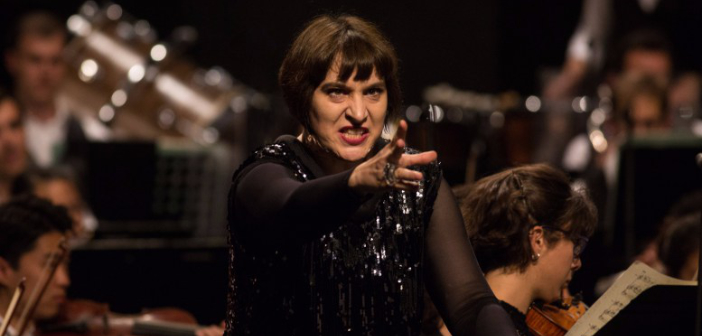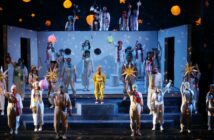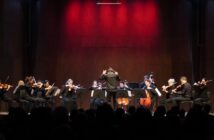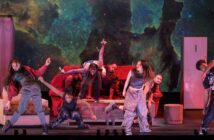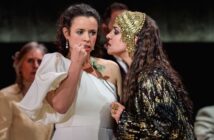Dracula (1931) with Philip Glass and the Kronos Quartet
Philip Glass on keyboard
Mike Rossi on keyboard and Conductor
Dan Bora, Sound Design
Kronos Quartet (David Harrington, violin, John Sherba, violin, Hank Dutt, viola, Sunny Yang, cello)
Film: Dracula, Tod Browning, director
Screenplay, Garrett Fort
Based on the Novel by Bram Stoker
Play Adapted for Film, Hamilton Deane and John Balderston
Film score by Philip Glass.
Film Cast: Bela Lugosi, David Manners, Helen Chandler, Dwight Frye, Edward Van Sloan.
A co-presentation of Segerstrom Center for the Arts and Philharmonic Society of Orange County
October 28, 2017
Get out the Ghosts. Drag in Dracula. Pedal up Philip Glass in the well-loved vintage picture palace in Oakland, CA, the Paramount, the Grammy-winning Kronos Quartet, add Bela Lugosi, Halloween night, and an audience that is in costume, de rigueur, Halloween or not, you’ve got the night before all souls in the U.S. All thanks to SF JAZZ, sultans and dragons, lollypop Blondes and clown, Frankensteins and opera divas, toreadors and air plane pilots, other vampires and wolves, cats and dogs, everyone and everything was in tune, even the ushers. Was there even a space between worlds? Hardly.
Between the gorgeous, garish theater itself, with glittering plated, mosaic proscenium, ceiling, walls, with nested film screen, the foreground quadrant of musicians including Philip Glass himself on keyboard, Mike Rossi conducting and playing keyboard, we had more than a feast: we had legends – from Tod Browning’s classic 1931 Dracula, remastered in 1999, while sustaining its finely textured black and white display, Lugosi’s classic black high-collared cape and beaming-gleaming-glaring-life-defying eyes, to Glass himself. At times, Glass’s own face aligned with the startling over-sized Dracula breathing fire and light, above his two larger than life mask heads, one atop another. Truly, we were all part of the life/dead whole. Marvelous!
Glass’s score, composed in 1998-99, to the original scoreless film, intensified, deepened and spread the already doleful narrative, the motifs dipping and driving it. No mere accompaniment or scene amplifier, it smoothed out clunky transitions – DRACULA was originally a play – and builds on its vision, insistent and evocative. Even when we couldn’t hear the soundtrack’s words – and that frequently happened – we were never out of earshot of the music’s compulsive power. Indeed – it got in the blood!!
The Dracula musical motif at the outset, accumulated power through its multiple dialogues – string duets of viola/cello and two violins, with Glass’s and Rossi’s keyboard, keeping us running the gauntlet between the here and the hereafter. Never does this underscore cease. In fact, it doubles some of the associations in the film itself, particularly at the crucial meeting of Count Dracula with his soon-to-be victim, with Wagner – read- Hitler’s preferred music – it was 1931, remember, just as the dictator was making his bid for world dominance and war – music climaxing the opera they attend. Further, the presence of a Doctor Van Helsing heightens the association. As the film unfolds, the drama we well know, further that devilish dimension that underpins the visual surface. Well we know too, that unstated is not unknown.
The stage setting itself grants us a microcosm of the world – east/west, north/south, high/low, kitsch and true. We are all protagonists in the show, as a matter of fact. Forces live and flourish beneath this surface, ignite our awareness, keep us on edge, and show us these must be reckoned with, or, at least, considered, this both in the world of illusion and the day-to-day, as well as the life-to-life story. Master and slave, life and death, need and salvation – more than the apparent plot is what the music unmutes and with which we are mesmerized. Thirst for life really, and that finds its form in the blood-sucking of blood, vampires all. To live – from sunrise to sunset – at the very least, victim after victim falling under its spell – is, actually, our very quest.
Until its climax, when Dracula lies complete in his coffin, after being stabbed in the heart, it brandishes a finale that brings to a crescendo the growing tension. Glass, Rossi and the Kronos, not only rounded out the tale, but enabled that very dimension to burrow into us. When we leave the theater, Browning’s DRACULA, and Lugosi’s glare, mists with its webs of danger texturing each scene – each one amply designed, dissolves; the music, however, remains as constant as a heartbeat.

